Psychedelics healing this world [Pt 2. Sacred Ceremonies]
Greetings fellow traveller,
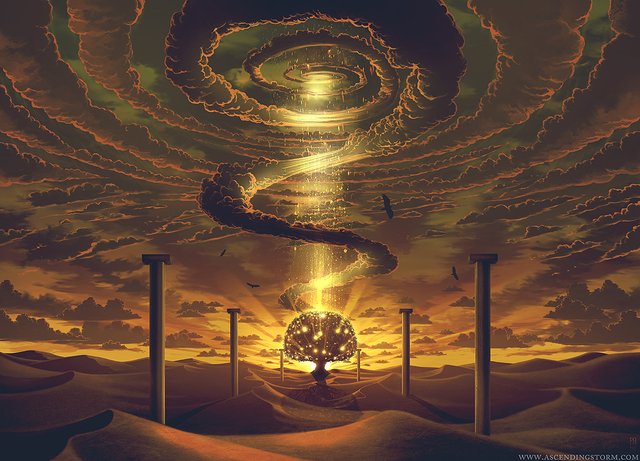
https://steemit.com/personal/@deathsangel/oc-psychedelics-and-healing-this-world-part-1-what-are-psychedelics
To expand a bit on that last post:
"Tools that allow us to silence, even completely dissolve the rational ego mind, so that we can become alligned with spirit, our inner guidance"-
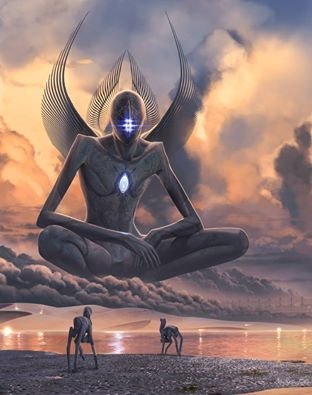
The 7 Master Plant Teachers—include Datura, Iboga, San Pedro cactus, Peyote, Ayahuasca, Amanita Muscaria….and the seventh, used by the Mazatecs and other indigenous groups in Mexico. There are undoubtedly others whose existence man has either not yet discovered or whose existence is being closely guarded by the peoples who use them.
There are a number of minor Plant Teachers as well, among them cannabis, Salvia divinorum, a number of species of mushrooms, coca, opium poppies and so forth. All of these are vital and can help alter the perspective of man but what separates them from the Master Plant Teachers is the depth of their teachings, the power or knowledge they are capable of imparting to man.
Among the flora of the world as we know it, several plants are not just allies, they are considered Master Plant Teachers. You might extend that to read: Master Plant Teachers of Man. These plants might be considered gate keepers. These plants are the plants that allow us, we humans, to slow down enough to communicate with the mountains; to speed up enough to communicate with a hummingbird, to visit the other realms past and present and simultaneous that are here but that we don’t ordinarily see or hear within the band widths of our senses.
When I say other realms that are already here, what I mean are other realities that co-exist with ours. Imagine a dog whistle. You blow it, you hear nothing. Your cat hears nothing. Birds hear nothing. But blow it close enough to a dog and the dog will yelp in pain at the sound.
Now the dog hears it but you can’t. But it was still there. Your hearing just didn’t have a broad enough band. Now what I’m suggesting the Master Plant Teachers do is broaden the bands of your senses so that we see, hear, feel, touch, taste and sense things we can’t under ordinary circumstances.
These teachers all have, I believe, the will and have made the choice to be teachers to mankind. They all, also, have built in mechanisms that ensure that mankind has to want to ingest them, has to want the knowledge they can impart or realize once they have opened the gates they guard for us. Most of them prevent frivolous or accidental use simply by being physically difficult to ingest. One might pick a peyote button and eat it with little difficulty, but to eat the 30-or 50 or 500 one would need to have the spirit of Peyote convinced that you want to learn what he has to teach is a very difficult thing. Similarly, the vile taste of datura or ayahuasca, coupled with the intense purging—often from both ends—that accompany the drinking of these teas, makes frivolous or accidental use almost impossible.
Healing is a vital element of all of the Master Plant Teachers.
With ayahuasca, with which we are concerning ourselves, that healing occurs on physical, emotional and spiritual levels, sometimes all in the same session. In northwestern Amazonia, home of ayahuasca, illness is almost always seen as a symptom of a disorder or disturbance on another plane. Accessing that plane and identifying that disorder will frequently eliminate the symptom. Ayahuasca is one of the methods curanderos—healers—use to access those other planes.
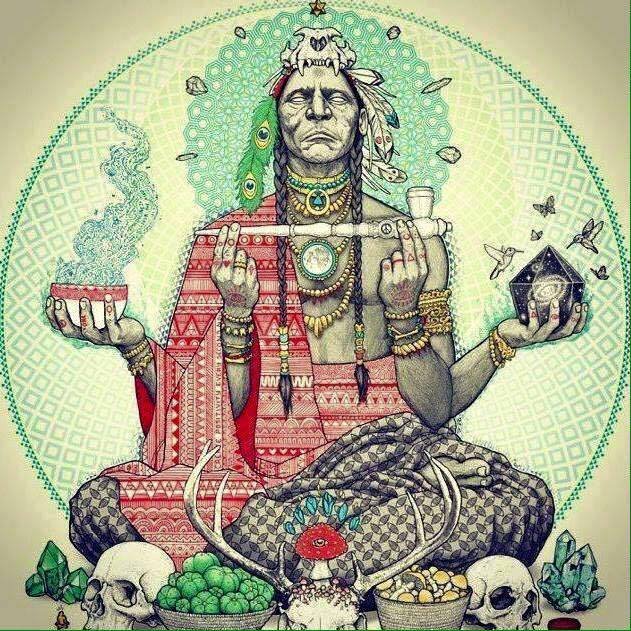
The Role of the Curandero:
-Excerpted from the book Yaje, The New Purgatory: Encounters With Ayahuasca, by Jimmy Weiskopf (Villegas Editores 2005, 648 pp, illustrated with photographs)
What gives a session its coherence is the work done by the shaman, who manages the inspirations, both personal and collective, given by the vine, like the conductor of an orchestra who harmonizes the sound of different instruments. These psychological and otherworldly currents are dispersed, so the task requires a great deal of concentration, strength of character and plain physical stamina, but the shaman also needs delicacy and, above all, a sincere desire to help people, to make them well in every sense. In the course of the night, each individual's moments of suffering, relief, ecstasy, quietude and extravagance weave a web of energies that only the curandero can perceive and direct to a curative end. By means of his "converse" with the spirits... he touches this phantasmagorical tissue; manipulating it to guide everyone's journey through the realm of the vine.
His most concrete intervention are his songs. He may sing them many times in a single night, but no two interpretations are the same. The feeling, the coloring, the duration of each outburst vary in accordance with the needs of the drinkers, the mood of the spirits, and his own degree of exaltation... The songs have a number of simple melodies that strike with force at the hara, the vital center located in our abdomen...
As the central instrument of the healing, the songs are most effective when there is a direct contact between the shaman and his patient. This, the formal curing ceremony or "cleansing" (limpieza), takes place around midnight, when the participants have recovered from the first kick of the vine. In most cases they have already vomited, which means that they are no longer so nauseous and forlorn and will be more sensitive to the invisible influence of benevolent spirits. These chants -- done at times with the leaf-fan, at times without -- are complemented by a body work that looks strange at first sight...
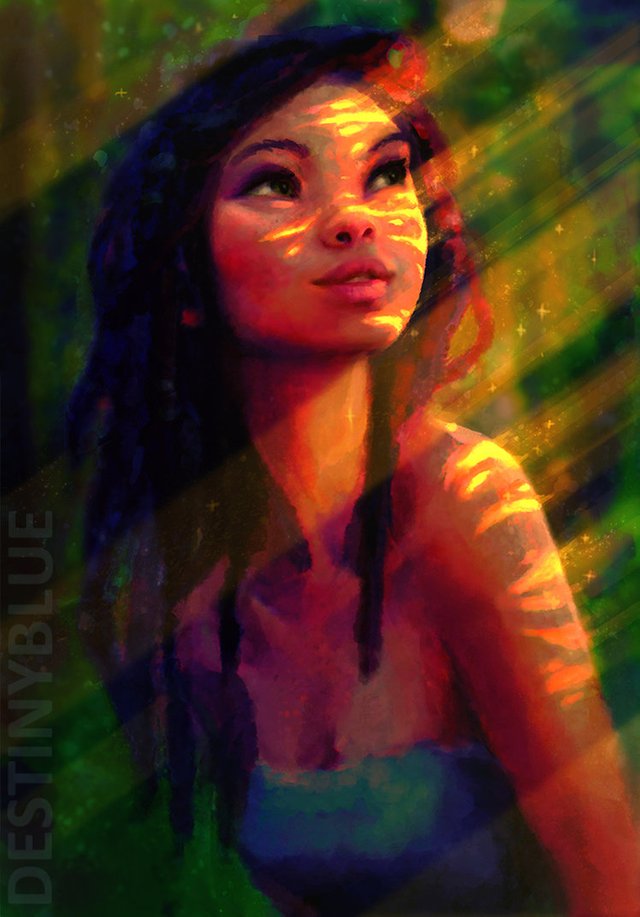
What centers the ceremony and keeps the drinker from losing his inner security in this startling absence of self-identity and external contour is the shaman's music. Although the songs are not continuous, they form a single concert that gives coherence to the long night, one in which silence is an instrument as well....
The vine doesn't cure you the way a normal medicine does; it simply forces you to surrender the illness to a higher power...
However strong the purgation, however illuminating the vision, however mysterious the spirit world, the vine is, in the end, only a medium of healing. The operative part, the spark that fires the explosion of positive energies, is the sincerity and loving-kindness of the healer, supported, it goes without saying, by the microscope he has in his mind. Conversely, in the hands of those who are inexpert or indifferent to the patient's health, yaje does not serve to cure illness...
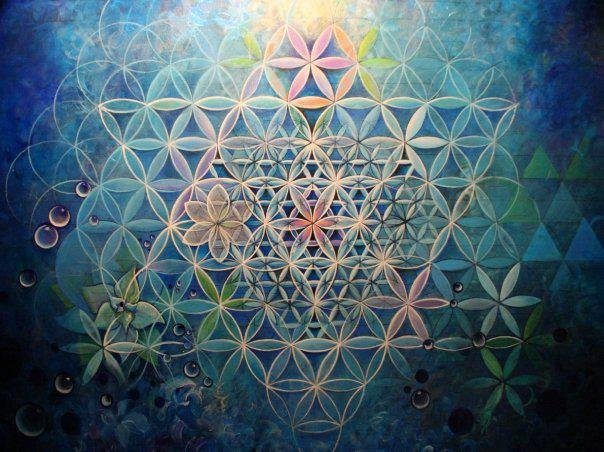
If the purpose of this encounter with the master spirit is therapeutic, does that mean that the persons who attend a session are ill? ... It is evident that only a few persons in the session need medical attention in the strict sense of the word. They are the first to be called by the Taita and the ones who absorb most of his attention. For everyone else, the "cleansing" is voluntary. ... In indigenous thought, conserving good health is not only a matter of correcting an apparent illness with perceivable symptoms. It also has to do with the need to establish an equilibrium between man and his environment. The latter in the broadest sense, meaning not only his natural surroundings, but his community, family, and workplace as well.
To achieve it, the curandero works directly on the spirits, because the primordial causes of illness, both physical and emotional, are perturbations that occur in this ethereal realm and reflect the bad relation or discordance between man-nature-society. When health is seen in this way, it becomes clear that the whole world is sick, insofar as the equilibrium between man and his medium is susceptible to constant shocks and requires periodical adjustments. Thus, drinking yaje in a ritual context may be regarded as a school of preventative medicine -- a weekly purification, directly done by the purgation of each body and, in a more subtle manner, by the harmonization of energies which the shaman effects.
"Yage is for knowing health" ("el yaje es para saber la salud") goes the saying of the taitas. It is their way of saying that the strange perceptions given by the vine serve as laboratory instruments, apparatuses of supra-human measurement that enable them to detect the ultimate causes of the ill in their visions.
... [T]he healer must become deeply drunk [on yaje] to attain this sensibility. Once he is intoxicated with yaje, he sings, plays the harmonica, blows tobacco smoke and shakes the leaf-fan, not just for the fun of it -- though it clearly is and no shame is attached to enjoying the drunkenness -- but to regulate his trance and direct its inspiration to the required end; such ritual gestures are both diagnostic and curative. The taita is not a high priest, immensely superior to and detached from the laity, but a person who drinks yaje and goes crazy like everyone else. What distinguishes him from the ordinary drinker is his constructive and altruistic management of his drunkenness. Because of his long experience and highly developed intuition, he knows how to "surf" the furious waves unleashed by the storm of the vine. Anyone may plunge into the water, but only the taita escapes being drowned. Not so much for his self-control... as for his total surrender to the spirits. It is this immolation of self that allows him to transform himself into a totemic animal so he may mediate in the relationship between human beings and other worlds. In this state of awareness, the norms that govern normal perception are shattered; the shaman becomes, at one and the same time, the most lucid and the most drunken person in the session.
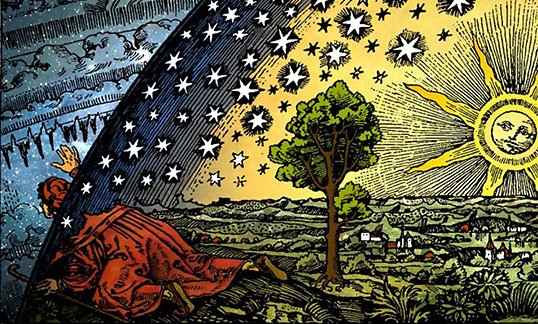
Through his visions, the shaman travels to the other worlds, which are arranged in multiple levels from a subterranean to a heavenly one.
Strengthened by his chants, he communicates with the "lords" (dueños) of the animals, forests. rivers, rainbows, thunder, and similar manifestations of nature, spirits that also include the ascended souls of taitas who have died... The journey to the beyond is a sublime experience, but it is full of dangers for the shaman, who may fall victim to the forces that are responsible for the evil that he is trying to exorcise. He must understand the motivations of the different invisible beings he meets and find a way of winning their trust and soothing them, or if it is not possible, to disarm the curse with his ritual gestures...
The Taita explains the healing mechanism of yaje through metaphors, drawn from nature or daily human conduct, which are sharp, graphic, and unpretentious. They have nothing of the pseudo-esoteric vagueness one perceives in the terminology of the "New Age." There are no "astral bodies," only lights, animals, people, the sky. ... I believe that the clarity or otherwise of the language used to describe this genre of experiences, by nature mysterious, says something about the authority of the interpreter. There is no doubt that the voice of the Taita is authentic, because you know he is not trying to give himself importance when he speaks as he does. But to reach from there to a full understanding of his teachings is another matter...
If the shaman lacks this magical and multidimensional capacity to see "into" the patient, he is not going to able to heal. Nowadays, when so many people are posing as taitas without having the required training, it is easy to deceive the kind of patient who knows little of yaje beyond its reputation as a medicine that is effective and non-intrusive, for such urbanized drinkers don't have rigorous standards about the shamanism of plants. How can they, when it is so alien to their own culture?
In these denaturalized circumstances, it doesn't take much to set yourself up as a healer. All you need is to participate in rituals led by an authentic taita for a period of time. Having accustomed yourself to the brew to the point where its purgative effects no longer overwhelm you, you simply emply the mimetic talents of an actor to copy what the shaman does. From there on, anyone can pray over the liquid, sing icaros, shake the leaf fan, blow tobacco smoke, suck the points of illness out of a patient's body, and so forth. In a mestizo society like Colombia, a lot of people from the main racial stream look like Indians, so that it is fairly easy for the poser to look as well as play the part once he has got hold of the ceremonial costume (the feather crown, necklaces, and ritual garments are easily bought). But if the performance isn't backed up by a true visionary gift, it will be nothing more than a series of mechanical gestures....
from Shamanism, Colonialism, and the Wild Man by Michael Taussig (University of Chicago 1987) p 344. (This book is also based mostly on author's research in Colombia.)
Daily life [for the shaman's patients, between Ayahuacsa sessions] set into a monotonous routine of small chores involving almost everyone, patients and workers alike. Many were the spaces set up by such an irregular work rhythm for talk and speculation, a rhythm every bit as important to the shaman's healing power as are the spectacular flights into the unknown with hallucinogens. For the patients it provides some distance from their problems, just as it condenses the discourse of magic and sorcery by having a group of afflicted people all together, gradually letting each other know, in spurts and in starts, about their misfortunes. Every day or second day a new patient arrived, from nearby or far away, and in discussing his or her problems with the others, no matter how obliquely, so the world of sorcery was empowered, and the shaman's house because a discursive fount circulating this social knowledge.
The daily coexistence of the patients and the shaman's family in the shaman's house also demystifies and humanizes, so to speak, the authority of the shaman. Unlike the situation of a priest or a university-traiend physician, whose mystique is facilitated by hus functionally specific role defining his very being, together with the separation of his workplace from his living quarters. the situation in the shaman's house is one where patient and heaeler acquire a rather intimate knowledge and understanding of each other's foibles, toilet habits, marital relations, and so forth. By and large I think it fair to say that the therapeutic efficacy of the shamanism with which I am acquaijted owes as much to the rough-and-tumble of this everyday intimacy as to the hallucinogenic rites that allow the shaman to weave together the mundane and the extraordinary.
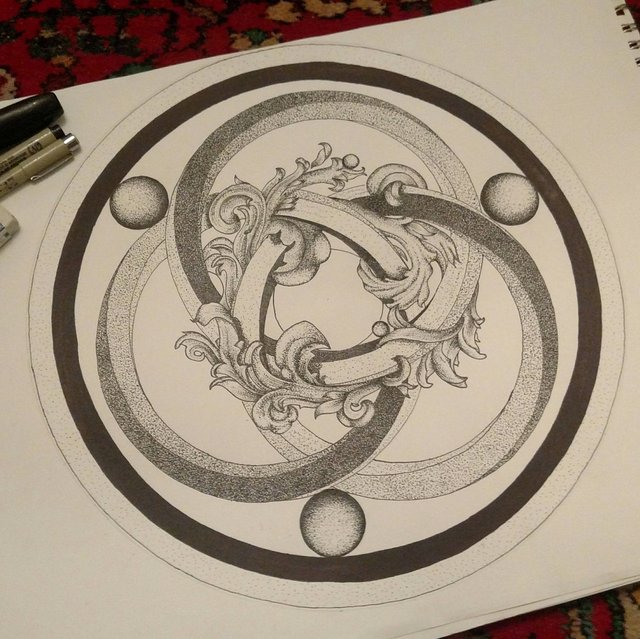
(From Daniel Pinchbeck's "Breaking Open the Head")
In Shamanism, Colonialism, and the Wild Man, the anthropologist Michael Taussig explores yage shamanism in Colombia, where ancient rituals have taken on new meanings in the wake of the cruel excesses of colonialism. Taussig's Mestizo sorcerors exorcise terror through laughter and improvisation, "building and rebuilding neocolonial healing rituals wherein fate is wrested from the hands of God and transcribed into a domain of chance and perhapsness."
Most anthropologists believe that all religious rituals work to order and unify society. Taussig found the opposite with yage: The ceremonies opened up a transcendent space for chaos. He quotes Roland Barthes on the idea of a "third" or "obtuse meaning," outside of what can be expressed in language or defined by cultural analysis:
" ... the obtuse meaning appears to extend outside culture, knowledge, information; analytically it has something derisory about it; opening out into the infinity of language, it can come through as limited in the eyes of analytic reason; it belongs to the family of pun, buffoonery, useless expenditure. Indifferent to moral or aesthetic categories (the trivial, the futile, the false, the pastiche), it is on the side of the carnival."(Barthes, Image, Music, Text)
For Taussig, shamanism preserves a place for knowledge that can heal because it falls outside of any system. Yage visions open up constellations of the unknown, obtuse meanings, and "chance and perhapsness."
Thanks for reading all of this
Spread the Light
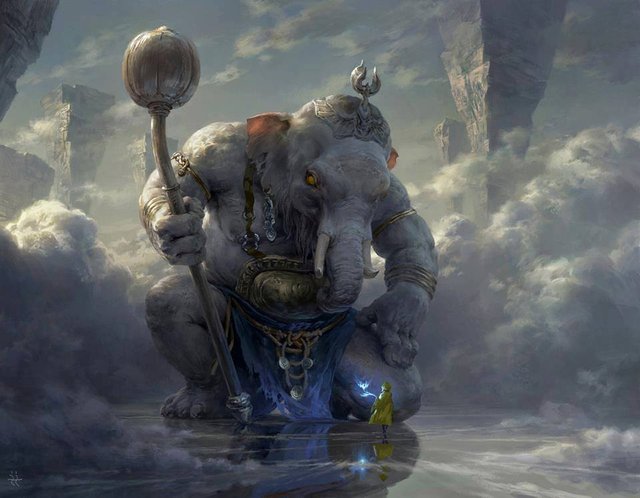
Theories of light by Jeffrey Smith
Contact by Alex Ries
"Medicine Man" from InfinityLife.us
Tiger Tiger by DestinyBlue
Work by Krystleyez
Flammarion engraving
Circular Illogic, Stipple Shaded Ink, 14" by user Oreganick
White Elephant by Tianhua Xu
maybe add the sources for the images as well? =)
I wish i had those :) they are from my personal collection that i found during the years
you could have found those, with a little help from google image.
you're welcome.
Great pictures. Now let's read the damn thing. :D
The reason i made it so extensive is because i love reading quality materials about this subject
flagged for uncredited image reuse
thanks for pointing this out to me- i'm a new user, i didn't know this wasn't allowed :)
I tried to point it out above ;)
although I'm not sure if flagging is the right way to go here... @anyx ?
Thanks for pointing this out, feels good
I would love to visit you, but I live on the Internet. (*^^)v (^^)v (^_^)v
Congratulations @deathsangel! You have received a personal award!
Click on the badge to view your own Board of Honor on SteemitBoard.
For more information about this award, click here
Congratulations @deathsangel! You have received a personal award!
Click on the badge to view your Board of Honor.
Do not miss the last post from @steemitboard:
SteemitBoard World Cup Contest - Round of 16 - Day 4
Participate in the SteemitBoard World Cup Contest!
Collect World Cup badges and win free SBD
Support the Gold Sponsors of the contest: @good-karma and @lukestokes
Congratulations @deathsangel! You received a personal award!
You can view your badges on your Steem Board and compare to others on the Steem Ranking
Vote for @Steemitboard as a witness to get one more award and increased upvotes!
You are so interesting! I do not believe Ive truly read something like that before. So good to find someone with unique thoughts on this issue. Seriously.. thanks for starting this up. This site is something that is required on the internet, someone with some originality